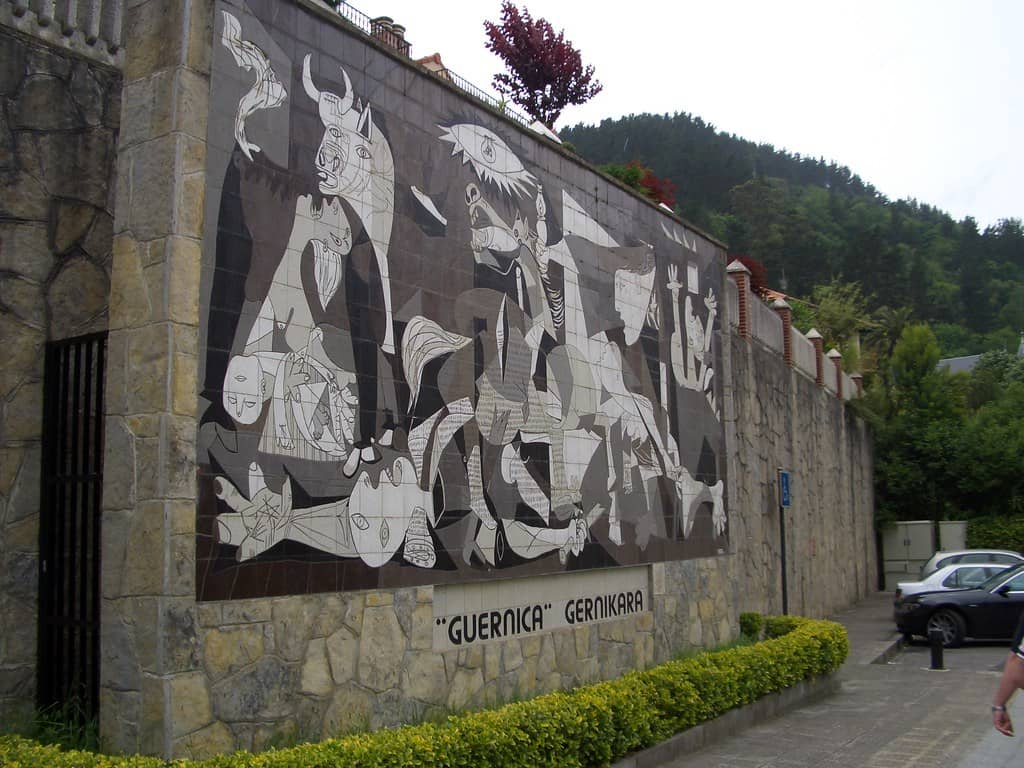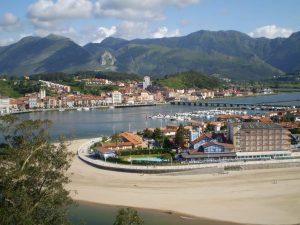
Strategically located on the Camino del Norte, Gernika offers pilgrims a rewarding stop full of history and significance. This iconic spot in the Basque Country is not only a key point on your journey but also a place where the legacy of the Camino intertwines with the rich Basque tradition.
As you advance along this route, every street and corner of this town invites you to explore its secrets and connect with its profound symbolism. Do you want to know what historical and cultural treasures await you at this point? Keep reading to discover the wonders that Gernika has in store to enrich your pilgrimage.
Índice de contenidos [Ocultar]
- 1 A starting point for pilgrims
- 2 Casa de Juntas and Árbol de Gernika: the symbol of Basque freedom
- 3 Peace Museum: reflection on the past and the future
- 4 Santa María Church: Gothic architecture with local charm
- 5 Park of the Peoples of Europe: art and nature in perfect harmony
- 6 Gernika Market: flavours and local traditions
- 7 Bombing Route: living memory of a tragic past
A starting point for pilgrims
Choosing the Camino del Norte means opting for a route that offers a blend of coastal landscapes, rich cultural history, and a more serene experience compared to other Camino routes. As specialists in Camino de Santiago trips, let us give you reasons to choose this route.
Unlike theCamino de Santiago from Ourense or theCamino Primitivo from Lugo, it offers a less crowded route. This allows you to connect more intimately with the natural environment and the local communities.
One of its main attractions is its variety of landscapes. From majestic mountains in Cantabria to lush beaches in Asturias and Euskadi, each section of this route presents new challenges and spectacular views. This variety makes each day of the pilgrimage a unique experience, keeping enthusiasm and motivation high along the way.
Moreover, it is famous for its gastronomy. Pilgrims can indulge in a culinary offering that includes fresh seafood, pintxos, and local wines. This gastronomic experience not only satisfies the palate but also enriches the journey, allowing pilgrims to immerse themselves in the culinary traditions of the Basque Country and the entire Cantabrian coast.
Its historical and cultural richness is another reason to choose this route. Along the way, there are numerous monuments, churches, and museums that tell the region’s story. For example, in Gernika, you can visit the Casa de Juntas and the Árbol de Gernika, iconic symbols of Basque freedom, as well as the Peace Museum, which invites reflection on the past and a commitment to a peaceful future.
If you are walking the Camino de Santiago from Irún, you will enjoy a more personalised and peaceful experience. The Camino del Norte stands out for its lower number of pilgrims, which allows for a greater connection with the surroundings and the people you meet along the way.
Another aspect to consider is the hospitality of the local communities. The small villages and towns along the route are known for their warm welcome, offering shelter, friendship, and support to pilgrims. This interaction with the locals enriches the travel experience, creating lasting memories and a sense of belonging.
Finally, choosing the Camino del Norte allows you to explore the unique identity of the Basque Country within the context of the Camino de Santiago. From the history of Gernika to the green landscapes that line the route, every step is an opportunity to discover and appreciate the cultural and natural heritage of this region.
Casa de Juntas and Árbol de Gernika: the symbol of Basque freedom

The Casa de Juntas was built between 1826 and 1833, under the direction of architect Antonio de Etxebarria, in a neoclassical style. This building is the headquarters of the highest institutional body of Bizkaia and has been the site of the Juntas Generales since its construction.
Originally, the meetings were held at the Santa María de la Antigua chapel, but this was demolished to make way for the new building. The Casa de Juntas is also a cultural space that reflects the history and traditions of the Basque people.
The Árbol de Gernika, a revered oak tree, has been witness to the swearing of the fueros since the 14th century. This tree has symbolised the freedom and rights of the Basque people. It was a meeting point for representatives from different towns to discuss common matters.
Although the current tree was planted in 2015, it stands in the place of its predecessors, some of which lasted over 100 years.
Peace Museum: reflection on the past and the future
The Peace Museum is a space dedicated to the memory and reflection on the horrors of the past, promoting values of peace and reconciliation. It was inaugurated on January 8th, 2003, and is inspired by the bombing on April 26th, 1937, a devastating event during the Spanish Civil War.
Through interactive exhibitions and educational activities, such as documentaries narrating the experiences of survivors, it invites consideration of the consequences of armed conflict.
Its permanent exhibition addresses topics such as the concept of peace, the legacy of the bombing, and the current state of human rights worldwide. It also offers guided tours to explore the memorial heritage of Gernika, becoming a reference for peace culture and historical memory.
Santa María Church: Gothic architecture with local charm
The Santa María Church is one of the most significant religious monuments in the town, built between the 15th and 17th centuries. Its Gothic style is evident in the impressive façade and unique architectural details, although it also presents Renaissance influences, especially in its interior.
This building, which stands on a slope, has three naves covered with ribbed vaults and is supported by elegant Ionic columns. Inside, visitors can admire valuable works of sacred art that reflect the rich local devotion. The church has been a place of worship and a focal point for the religious and social traditions of the town.
Park of the Peoples of Europe: art and nature in perfect harmony

The Park of the Peoples of Europe, inaugurated in 1991, is an emblematic space. Here, art and nature coexist perfectly.
This green space is home to prominent sculptures such as “Gure Aitaren Etxea” by Eduardo Chillida and “Large Figure in a Shelter” by Henry Moore, which symbolise peace and European unity. Chillida’s sculpture, almost 8 metres high, represents the house of the Basque people and is connected to the Árbol de Gernika.
In addition, the park features a rich variety of native trees and shrubs, as well as a pond that enhances the beauty of the surroundings. Walking through this place provides a break in nature and a deep reflection on the commitment to peace and historical memory.
Gernika Market: flavours and local traditions
The Gernika Market is a bustling hub where local life thrives. This market offers fresh, typical products like beans and the famous peppers.
Visitors can enjoy exploring the stalls filled with colours and flavours that reflect the Basque culinary traditions. To experience it authentically, be sure to interact with local vendors and try some traditional pintxos at the nearby taverns.
Bombing Route: living memory of a tragic past
The Bombing Route is a journey that allows visitors to explore key sites related to the devastating airstrike that Gernika suffered on April 26th, 1937. This event, carried out by the German Condor Legion and the Italian Legionary Air Force, aimed to demoralise the population and hinder the retreat of Republican troops.
The route includes commemorative plaques and testimonies from survivors. This way, the historical memory of this tragic event remains alive.
Through interactive exhibitions and personal narratives, visitors can reflect on the impact of the bombing on the community and how remembering these events can contribute to building a more peaceful future. Learning about the history is a way to understand the ongoing commitment to peace and reconciliation in the region.










 Hello, would you like more information?
Hello, would you like more information?